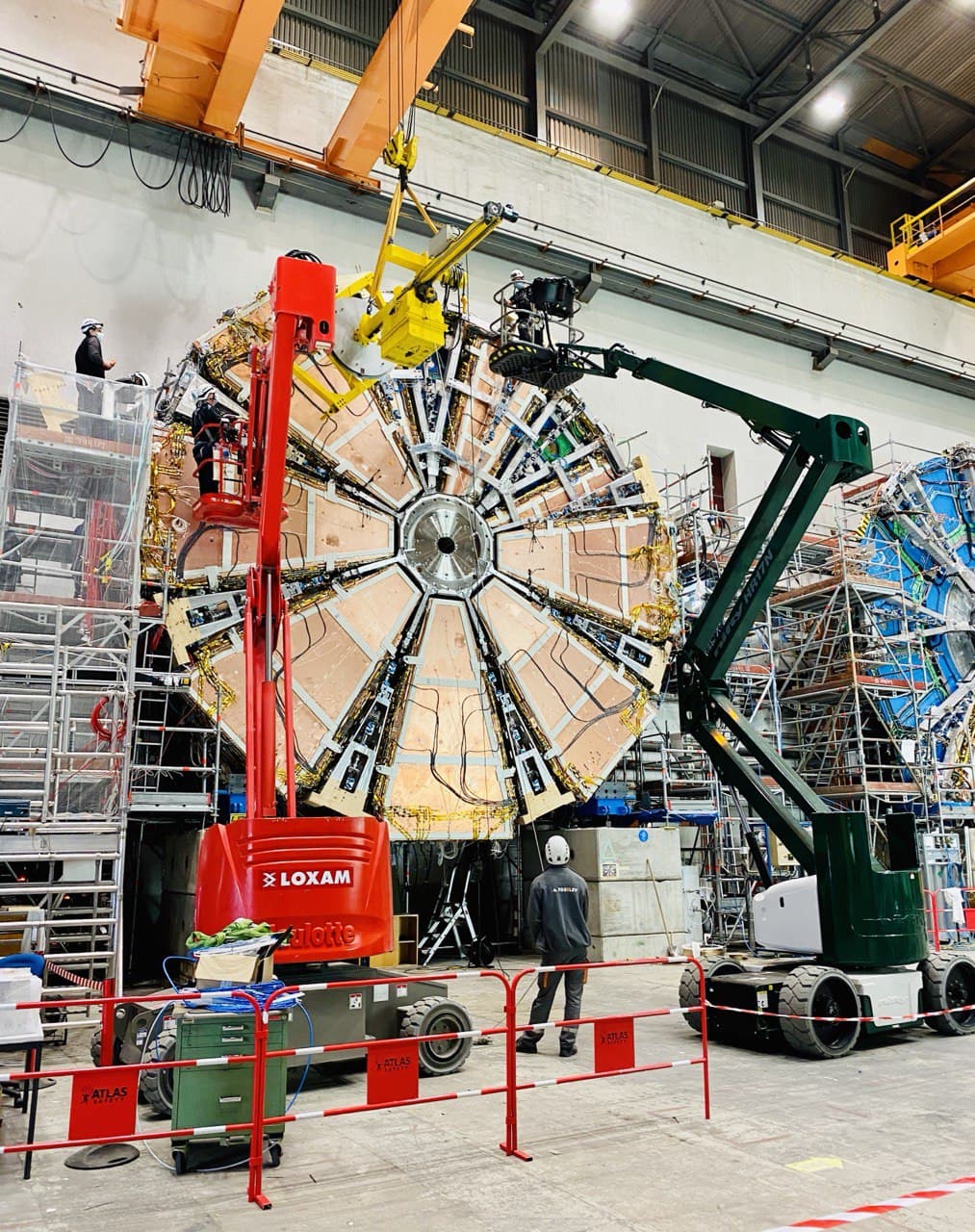For taking better measurements of Standard Model parameters including the Higgs boson sector and finding hints of New Physics, a lot of new data is needed. To do this, LHC scientists are modernizing this facility. To register and record new physical events, a component of the ATLAS detector should be modernized too. Young scientists from TSU - Olesya Kuchinskaya and Maksim Penzin - are participating in one of the modernization tasks.
"Increasing luminosity will increase the workload of the ATLAS detector, first in areas close to proton beam interaction. One of those areas is Small Wheel (SW) detectors of the ATLAS muon spectrometer," says Olesya Kuchinskaya, a researcher at the High Energy Physics Data Analysis Laboratory, TSU Faculty of Physics.
"To function at high luminosity, SW detectors will be replaced with New Small Wheel (NSW). NSW support structure looks like a wheel about 10 m in diameter and is used for assembling detector cameras. That is why it is called New Muon Wheels."
TSU scientists participated in testing special VMM microchips that are used in readout electronics of NSW detectors. For this purpose, TSU developed a multifunctional VMMT stand-tester. This microelectrical equipment registers VMM microchip feedback to test impulses with different sources. The project lasted three years, and during these three years, TSU scientists had tested nearly 35 thousand microchips. Unique stands for testing electronics will be brought back to Tomsk from CERN and will be adapted for Faculty of Physics students' lab projects.

Tomsk State University has taken part in the ATLAS collaboration of CERN since 2015. TSU scientists use and modernize muon spectrometers, as well as analyze ATLAS experiment data. Under a megagrant of the Russian Government, TSU organized a High Energy Physics Data Analysis Laboratory for processing data from LHC experiments.
The laboratory brought together students, postgraduate students, young scientists from Tomsk universities, and leading scientists from all over the world. Through data analysis, these physicists are studying the Higgs boson decay into a muon-muon final state, detection of three-particle production of heavy gauge W- and Z-bosons, and differential measurement of WW-boson photoproduction, as well as searching for hints of New Physics beyond the Standard Model.






